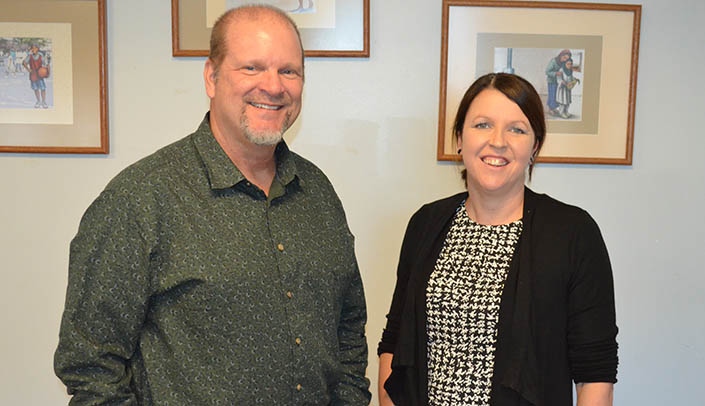Laurie McLay, Ph.D., a senior lecturer from the University of Canterbury in Christchurch, New Zealand, visited the Munroe-Meyer Institute earlier this fall as part of her sabbatical, touring the institution and other areas of UNMC while being hosted by MMI’s Brett Kuhn, Ph.D.
Dr. McLay’s main area of academic interest and research focus is sleep problems in children with developmental disabilities. The primary reason for her visit was to establish collaborations to research sleep in children with autism and other developmental disabilities.
She observed different clinics while on her visit.
“It’s a good opportunity to see how different teams work together, get research ideas, that kind of thing,” she said.
At MMI, Dr. McLay visited the pediatric sleep clinic, observed an assessment for autism, visited the Autism Care for Toddlers Clinic, and toured pediatric feeding and severe behaviors.
“It’s one of the reasons I thought it would be interesting to come here,” she said. “There are so many different types of services provided and such amazing links between clinical work and research.”
Dr. McLay visited several places in the United States, including Austin, Texas, and Nashville, during a six-week trip to the U.S., but was especially interested in Dr. Kuhn’s sleep research and sleep clinic.
“I got to sit in on a clinic for the day and see the practices they’re doing,” she said. “It wasn’t a different model from what we do in New Zealand . . . but it’s nice to see a different range of children. We work exclusively with children with autism, so it was interesting to see the model applied across a different range of children and young people.”
“Dr. McLay is a noted international researcher,” Dr. Kuhn said. “We were pleased to showcase our work at MMI, including our work on sleep problems in children with intellectual and developmental disabilities. We hope perhaps to one day collaborate with Dr. McLay in this work.”
Dr. McLay said she greatly enjoyed her visit to MMI.
“One of the things that’s been really striking about it is seeing how well integrated the research and clinical work is, and also how the work that’s being done benefits the community, the children and families. It’s such applied, valuable work.”
